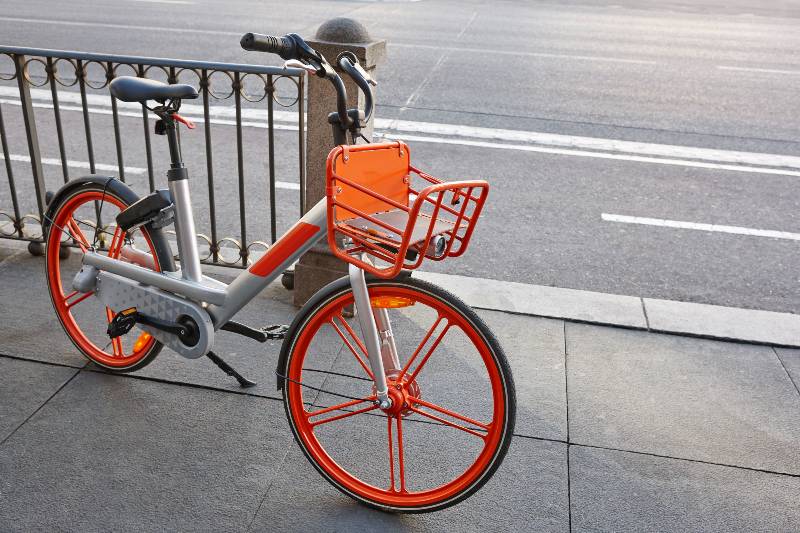Ebike Weight Limits: What You Need to Know
If you’re considering purchasing an e-bike, one of the first things you’ll want to know is what the weight limit is. Every bike is different, and there are a variety of factors that determine how much weight it can handle. In this blog post, we will discuss the different e-bike weight limits and provide some tips on how to choose the right one for your needs!
It’s essential you are clear whether the figure includes the weight of the e-bike or just refers to the rider and any extra cargo or passengers they load onto the e-bike.
Key Takeaways
- Bicycles that are powered by an electric motor are known as electric bikes.
- Certain variations are made to transport freight and may handle weights up to 550 pounds, they are normally limited to a maximum weight of 220-300 pounds. Both young and old utilize electric bikes, which are available in a range of sizes and weight capacities.
- On the manufacturer’s website, the product description often includes a weight restriction for each individual E-bike. If you can’t locate the weight restriction for your particular model, get in touch with the maker and ask them to provide you with the details.

Is There a Weight Limit for Electric Bikes?
Electric bikes are a type of bicycle that is powered by an electric motor. They are typically limited to a maximum weight of 220-300 pounds, although some variants are designed to transport cargo and can support weights up to 550 pounds. Electric bikes are used by both young and old people and come in a variety of sizes and weight capacities.
Electric bikes offer many benefits over traditional bicycles, including increased speed, hill-climbing ability, and range. Electric bikes are also much simpler to operate than gasoline-powered motorcycles or scooters. However, electric bikes do have some drawbacks, such as their relatively high cost and the need to recharge the battery after a few hours of use. Overall, electric bikes are a convenient and eco-friendly way to travel, and they are sure to become even more popular in the years ahead.
Why Do Different Weight Limits On E-Bikes Exist?
The answer may lie in the fact that many e-bikes are made for casual use and not for long trips or touring. For example, an e-bike with an e-bike weight limit of 350 pounds will likely have smaller tires and less power than an e-bike with a weight limit of 400 pounds.
Smaller bikes are built for shorter rides around town, while larger bikes can be used for longer distances. Larger bikes also typically have more features such as electric cruise control, which allows heavier riders to set their speed and maintain it automatically — something that’s not available on smaller bikes.
But even within each bike category, there are differences between models. For instance, some models have wider tires than others to absorb bumps in the road more comfortably. Others have fenders that can protect clothing from rain or dirt kicked up by tires. Some have racks so heavy riders can carry gear on top of their bike — or even other people or pets!
Finding The Weight Limit On A Specific E-Bike
The weight limit on a specific E-bike is usually listed in the product description on the manufacturer’s website. If you can’t find the weight limit for your specific model, contact the manufacturer directly and ask them to send you the information.
The maximum weight limit is important because it tells you how much total weight the bike can safely carry. It also tells you whether or not you should be concerned about overloading your bike with additional cargo or passengers.
If you’re planning to use your e-bike for commuting, shopping, and other similar activities, then you’ll want to know how much weight it can safely carry so that you can avoid overloading it and causing damage to either yourself or your bike.
What If You Push The Weight Limit On Your E-Bike?
If you’re considering purchasing an electric bike, one of the things you’ll want to take into account is how much weight the bike can safely accommodate. Most electric bikes have a weight limit of around 250 pounds, which includes the rider’s weight as well as any cargo that might be carried on the bike. If you exceed this weight limit, you could damage the bike and even put yourself at risk of injury.
For example, the motor or battery may overheat if it’s carrying too much weight, and the tires could burst if they’re overloaded. So before you buy an electric bike, make sure you know how much weight it can safely carry. And if you’re planning on carrying any extra weight, such as in a trailer or on racks, be sure to factor that into your calculations as well. By taking into account the total weight of the rider and cargo, you can help ensure that you’ll enjoy a safe and enjoyable ride on your new electric bike.
Understanding How Electric Bikes Work
If you’re new to e-bikes, it’s easy to get overwhelmed by all of the different terminologies. But don’t worry, we’re here to help you understand how electric bikes work. In a nutshell, an e-bike is a bicycle that has a battery-powered “assist” that comes from pedaling and, in some circumstances, a throttle. The small motor engages and provides you with a boost when you push the pedals on a pedal-assist e-bike, allowing you to zip up steep hills and cruise over difficult terrain without gassing yourself.
Most pedal-assist e-bikes have three levels of assist: low, medium, and high. And depending on the level of assistance you choose, the motor will provide different levels of power. It’s important to note that not all e-bikes have a throttle; some models are pedal-assist only. And if you’re wondering how far you can go on a single charge, most e-bikes will travel between 20 and 50 miles on a single charge. Of course, this varies depending on the terrain, your weight, and the level of assistance you’re using. So now that you know the basics of how electric bikes work, get out there and start exploring!
Electric city bike for oversized riders
Across the country, bike-sharing programs are becoming increasingly popular as a means of transportation. However, these programs typically only offer bikes that are designed for people of average size. This can be a problem for taller or larger riders, who may have difficulty finding a bike that fits them properly.
Fortunately, electric city bikes offer a solution. These bikes are designed to accommodate a wider range of riders, and they come equipped with powerful motors that make it easy to get up hills or ride into the wind. In addition, electric city bikes typically have comfortable seats and handlebars, making them ideal for longer rides. As a result, electric city bikes offer an ideal solution for oversized riders who want to take advantage of bike-sharing programs.
What to Look for in an E-Bike for a Heavier Rider
If you’re a heavy rider, you may find that your e-bike isn’t up to the task. For a start, the kit itself may be more expensive. Plus, if you’re carrying more weight, there’s more strain on the battery capacity and motors.
In this article, we’ll look at what to look for in an e-bike for a heavier rider.
1. Strong frame material
Strong bike frame material is essential when you’re choosing an e-bike because the frame will be supporting your weight. If it’s built from a weak material, it could break under pressure.
Look for a bicycle frame that’s made of aluminum or steel—both are great materials for bikes. The more expensive bikes with carbon fiber frames may be lighter, but they can also be more brittle than aluminum or steel. So if you’re looking for something that will stand up to heavy use and last longer than other bikes, go with aluminum or steel!
2. A higher number of spokes
If you’re heavier and looking for a stronger e-bike, you should consider the number of spokes in the wheel. More spokes mean more support, which is going to help keep your tires from wearing down as quickly.
This is especially important if you plan on riding on rough terrain or off-road. The more spokes there are, the more shock absorption there will be and the less likely it is that your tires will get damaged.
If you’re looking for an e-bike that can handle rougher roads and tougher trails, this is definitely something to consider when choosing a model!
3. Wider rims/wheels
The width of your e-bike’s rims and wheels is one of the most important considerations when you’re shopping for a bike that’s going to work well for heavy riders. Electric bicycles are known for being able to handle a wide range of terrain and conditions, but this is especially true if you have wider rims.
The more surface area your tire has on the ground, the better it will be able to handle bumps in the road or other obstacles that might throw a standard bike off balance. Wider rims also provide extra stability when you’re traveling at high speeds and negotiating turns.
Three of the Best Electric Bikes For Heavier Riders
Below are links to the 3 bikes we recommend for heavier riders, grab the image of the bikes for each site and write brief summary on why we recommend them for heavier riders
1. Aventure
The Aventure edition of the e-bike has just become more affordable, making it the most powerful and versatile option on the market. The 4″ fat tires and front suspension ensure that you’ll be comfortable whether you choose the pavement or the trail, while the front suspension’s 80mm of travel ensures that you’ll absorb all of the bumps in your route. With a range of up to 20 miles on a single charge, this ebike is perfect for anyone looking for a reliable and affordable way to get around. Whether you’re commuting to work or exploring your favorite trails, the Aventure edition is the perfect bike for you. Order yours today and start enjoying the freedom of ebike riding!
2. Cobra
The Cobra ebike is a powerful and stylish bike that is perfect for anyone looking for an ebike that can handle any terrain. The 750W gear hub motor power is perfect for riders who want a powerful motor that can handle any terrain, and the coil suspension ensures that riders will be able to absorb any bumps on the trail. The 26″X4.8″ CST super fat tires make this bike stable and safe for all road conditions, making it the perfect choice for anyone looking for an ebike that can handle any terrain.
3. Allant+ 7 Lowstep
The Allant+ 7 Lowstep is the perfect e-bike for commuting and running errands around town. With a comfortable low step-through frame, this bike is easy to get on and off, even when carrying groceries or other items. The powerful motor provides plenty of assistance when pedaling, making it easy to get up to speed and navigate hills. And the stylish design ensures that you’ll arrive at your destination looking sharp. Whether you’re commuting to work or running errands around town, the Allant+ 7 Lowstep is the perfect e-bike for getting the job done.
Ebike Weight Limit FAQs
If you’re looking to buy an electric bike, you’ll want to know what the bike weight limit is. The good news is that they’re designed to be able to handle more weight than you might think—but there are a few things you should know before you get started. Here are some frequently asked questions:
Can you be too heavy for an e-bike?
While electric bikes are a great way to get around, there are some weight restrictions that riders should be aware of. Most electric bikes have weight limits of 220 to 300 pounds, which means that riders over that weight may have difficulty using them. Some variants of electric bikes, however, are specifically designed to transport cargo and can support weights of up to 550 pounds. So, if you’re looking for an electric bike that can accommodate a heavier rider, be sure to check the weight limits before making your purchase.
Does your weight matter when buying an e-bike?
Just as with a regular bike, the weight of an e-bike will have an impact on its performance. Heavier bikes are generally more difficult to ride and can be slower than lighter bikes, particularly on uphill sections. However, weight is not the only factor that determines how an e-bike will perform. The type of motor, battery size and pedal assist level all play a role in how fast an e-bike can go.
As a result, it is important to consider all of these factors when choosing an e-bike. If you are looking for a fast bike to ride on flat terrain, then a lighter bike with a powerful motor may be the best option. However, if you need an e-bike that can tackle challenging hills, then a heavier bike with a lower pedal assist level may be more suitable. Ultimately, the best way to find the right e-bike for your needs is to test ride a few different models and see which one feels best for you.
Can 2 people ride on an e-bike?
Yes, two people can ride some e-bikes. In fact, several electric bicycle manufacturers have released e-bike versions that are either meant for two riders or can be equipped with a second passenger seat as a factory-installed accessory.
Of course, the biggest drawback to having two people on an e-bike is that it will probably go slower than if only one person is riding. This is because most electric bicycles are designed for single riders and have a limited power output. However, if you don’t mind going a little slower, then riding an e-bike with a friend or loved one can be a great experience. Just be sure to obey all traffic laws and use extra caution when riding with a passenger.
Conclusion
An Ebike’s maximum weight capacity limits can vary based on the type of ebike, its intended use, and local laws. In some cases, bikes may be limited to a certain weight in order to be classified as a bicycle rather than a motor vehicle. Knowing these weight limits is important for bikers so they can stay within the law and ensure their bike is safe for riding.
We hope that you found this information helpful and informative. Be sure to visit our website for more eco-friendly bike tips, reviews, and advice.






